Hearing Aid Styles
A wide variety of hearing aid styles offer a range of technology and features. The cost of hearing aids is primarily determined by the technology level and features, rather than the style chosen. Modern digital hearing aids are available in different technology levels, such as basic, entry, advanced, or premium.
Basic digital hearing aids require manual adjustments by the wearer in certain listening environments, such as adjusting volume or changing listening programs. In contrast, premium or advanced hearing aids automatically respond to changes in the listener's environment based on detected signals, eliminating the need for manual adjustments. As the technology level increases, advanced features become more available.
Some examples of advanced features found in today's digital hearing aids include:
- Degree of hearing loss (power requirements)
- Manual dexterity and visual abilities
- Patient's budget
- Cosmetics
- Skin sensitivities
- Anatomical/medical considerations
- Lifestyle and listening needs
Styles of hearing aids
Advancements in digital technology and miniaturization of internal components have led to sleek, compact, and innovative hearing aid styles that cater to a wide range of wearers.
In the ear (ITE)
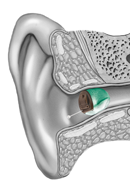
Invisible in canal (IIC)
The smallest custom style, designed for mild-to-moderate hearing loss.
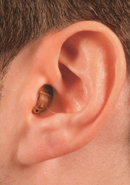
Completely in canal (CIC)
Fits deeply within the ear canal and is nearly invisible when worn, suitable for mild-to-moderate hearing loss.
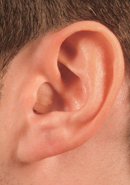
In the canal (ITC)
Sits in the lower portion of the outer ear bowl, providing comfort and additional features, suitable for mild and moderate hearing loss.
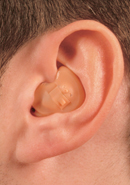
Full shell in the ear (ITE)
Flush within the entire ear bowl, accommodating more controls and features, recommended for mild-to-severe hearing loss.
Behind the ear
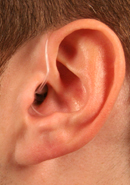
Mini BTE with slim tube and tip
Hides behind the outer ear with thin tubing, suitable for mild-to-moderate high-frequency losses.
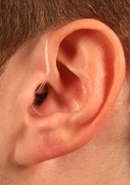
Receiver in ear (RIC)
Mini BTE with the speaker incorporated in the ear tip, fitting mild-to-severe hearing losses.

BTE with Earmold
Fits mild through severe hearing losses, with a longer shape behind the outer ear and customizable earmolds.
The choice of hearing aid style depends on individual needs, preferences, and hearing loss characteristics.

